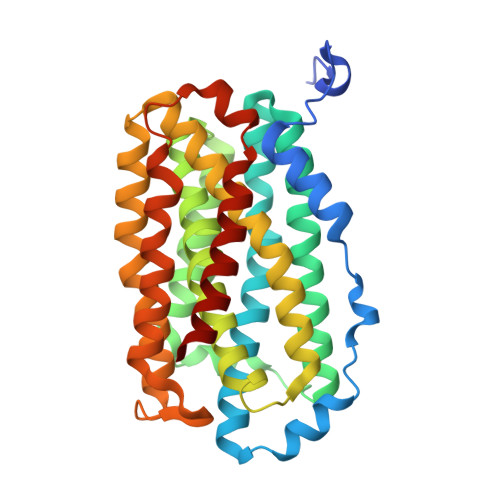A Dynamic C-Terminal Segment in the Mycobacterium Tuberculosis Mn/Fe R2Lox Protein Can Adopt a Helical Structure with Possible Functional Consequences.
Andersson, C.S., Berthold, C.L., Hogbom, M.(2012) Chem Biodivers 9: 1981
- PubMed: 22976985
- DOI: https://doi.org/10.1002/cbdv.201100428
- Primary Citation of Related Structures:
4AC8 - PubMed Abstract:
Mycobacterium tuberculosis R2-like ligand-binding oxidase (MtR2lox) belongs to a recently discovered group of proteins that are homologous to the ribonucleotide reductase R2 proteins. MtR2lox carries a heterodinuclear Mn/Fe cofactor and, unlike R2 proteins, a large ligand-binding cavity. A unique tyrosine-valine cross link is also found in the vicinity of the active site. To date, all known structures of R2 and R2lox proteins show a disordered C-terminal segment. Here, we present two new crystal forms of MtR2lox, revealing an ordered helical C-terminal. The ability of alternating between an ordered and disordered state agrees well with bioinformatic analysis of the protein sequence. Interestingly, ordering of the C-terminal helix shields a large positively charged patch on the protein surface, potentially used for interaction with other cellular components. We hypothesize that the dynamic C-terminal segment may be involved in control of protein function in vivo.
Organizational Affiliation:
Stockholm Center for Biomembrane Research, Department of Biochemistry and Biophysics, Arrhenius Laboratories for Natural Sciences, Stockholm University, SE-10691 Stockholm.



















